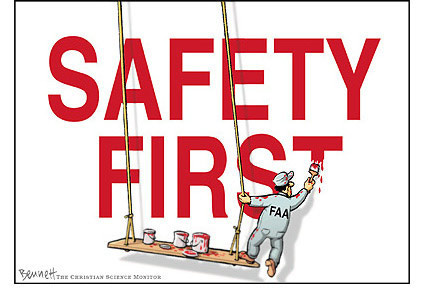Safe Robots
by David Kohanbash on January 15, 2014

Hi all
Remembering to be (and being) safe is an important aspect of building robots. If you are not do things safely, you might not get the chance to build anything else.
I am not going to go into the standard stuff such as soldering, machining, and chemical safety since you can get that in other places. The thing I want to talk about is safety specifically with robots.
When you are working around robots you must be aware of your surrounding, even more-so then when working with other things. The reason is that robots can move on their own and act on their own. At the most basic level having an emergency stop that can be used to make sure the robot does not start moving and so it can be stopped in the event of an unsafe action. Getting into the habit of pressing the emergency stop every time you are working on, or not using the robot is a good idea.
It is often a good idea to have someone designated as the “safety guy or gal” whose responsibility it is to monitor the robot and not worry about other things (such as developing or debugging code). When you are working on a robot in the shop a “lock out tag” can be used to let other people know that it is not safe to operate the robot.
Personal protective equipment (PPE) is also important. In this category we can have eye protection from things such as the sun, dust, and sensors. Inhalation protection (respirators, etc..)to protect yourself from breathing in fumes and fine particle materials (sand, silica, glass, etc..). Skin protection (clothing that covers you and sun screen) should be on your packing list when working outdoors. If you are operating an engine indoors make sure there is proper ventilation (often there is a tube that can go over the exhaust pipe to suck the exhaust a way).
Active communication is critical for maintaining a safe environment. There should be a clear test plan that everyone knows and team members should have radios. The robot can also “communicate” with you to warn you of danger. Some ways of doing that is to put lights and/or sirens on the robot so it is easy to see/hear that it is coming. Proper signage is also important. When you are testing a robot placing large, easy to see signs in the area (and at all of the entrances) saying “Caution: Unmanned Robot Testing in Progress” in essential. If there are multiple common languages in the area don’t forget to post the sign with all of the languages required. In certain areas wearing a reflective vest is also advised to aid with visibility.
While everyone knows this (and many people ignore this) you should have a first aid kit and know how to get help (in many places that means making sure you have cellular service to call the local emergency number (ie 911 is the US)). Having people trained in CPR/First Aid is an ideal. The same goes for a fire extinguisher (of the proper type) and having people trained to use it (sweeping motions at the BASE of the flame).
There is no way for me to list everything. Most of staying safe involves using common sense. If there is a specific hazard you should prepare for that hazard. For example if you are using hydrogen gas you should have a hydrogen gas alarm and know how to handle a leak. If you have radioactive materials then you really need to ask an expert about proper handling and safety procedures.
Most people (myself including) can often find certain safety rules annoying. However they are usually for a reason (even if you do not know the reason).
While I am not sure if it is true there is a common story about the navy guy who killed himself with a 9V battery. Moral of the story is don’t be dumb, or you might end up with a Darwin award (this is an award that you do not want)!
Below is an interesting image from the RIA with robot safety figures.

Top image from http://shcofclarksville.com/about-us/departments/accident-review-board/safety-first-3/
Large image provided by http://www.robotics.org/robotic-content.cfm/Robotics/Robots-At-Work-A-Look-At-Robot-Safety/id/138


Leave a Reply